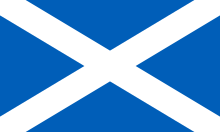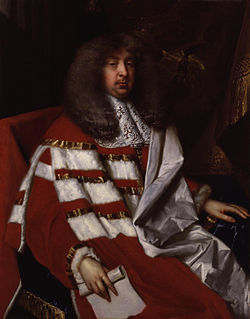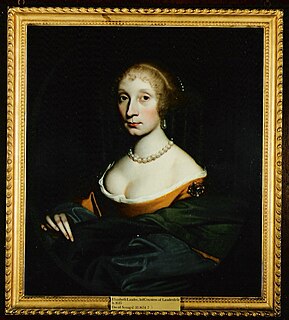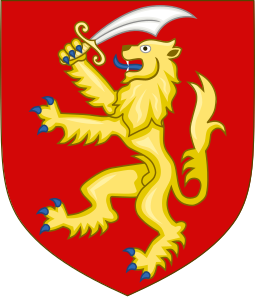
The Bearer of the National Flag of Scotland is one of the Great Officers in the Royal Household of Scotland. The bearer participates in royal, state, or other ceremonial events when needed.
In the United Kingdom the Great Officers of State are traditional ministers of The Crown who either inherit their positions or are appointed to exercise certain largely ceremonial functions or to operate as members of the government. Separate Great Officers of State exist for England and for Scotland, and formerly for Ireland. Many of the Great Officers became largely ceremonial because historically they were so influential that their powers had to be resumed by the Crown or dissipated.
A royal household or imperial household is the residence and administrative headquarters in ancient and post-classical monarchies, and papal household for popes, and formed the basis for the general government of the country as well as providing for the needs of the sovereign and their relations.

Scotland is a country that is part of the United Kingdom. Sharing a border with England to the southeast, Scotland is otherwise surrounded by the Atlantic Ocean to the north and west, by the North Sea to the northeast and by the Irish Sea to the south. In addition to the mainland, situated on the northern third of the island of Great Britain, Scotland has over 790 islands, including the Northern Isles and the Hebrides.
By charter of novodamus of 1676, later ratified by the Parliament of Scotland, [1] Charles II granted Charles Maitland "the office of bearing our insignia within our said realm of Scotland". Maitland's descendant, James Maitland, 8th Earl of Lauderdale, matriculated arms in the character of Hereditary Standard Bearer of Scotland. In 1952 the Lord Lyon decided that the Earl of Lauderdale's right was to bear the saltire, whereas the Earl of Dundee as Bearer of the Royal Banner bears the Royal Banner of Scotland, the "Lion Rampant".
A charter of novodamus, in Scottish feudal land law, is a fresh grant of lands to the grantee. It is usually granted to make some change in the incidents of tenure of land already granted, or to resolve doubts about the grant or its terms.

The Parliament of Scotland was the legislature of the Kingdom of Scotland. The parliament, like other such institutions, evolved during the Middle Ages from the king's council of bishops and earls. It is first identifiable as a parliament in 1235, during the reign of Alexander II, when it was described as a "colloquium" and already possessed a political and judicial role. By the early fourteenth century, the attendance of knights and freeholders had become important, and from 1326 commissioners from the burghs attended. Consisting of the "three estates" of clergy, nobility and the burghs sitting in a single chamber, the parliament gave consent for the raising of taxation and played an important role in the administration of justice, foreign policy, war, and all manner of other legislation. Parliamentary business was also carried out by "sister" institutions, such as General Councils or Convention of Estates. These could carry out much business also dealt with by parliament – taxation, legislation and policy-making – but lacked the ultimate authority of a full parliament.

Charles II was king of England, Scotland and Ireland. He was king of Scotland from 1649 until his deposition in 1651, and king of England, Scotland and Ireland from the restoration of the monarchy in 1660 until his death.











